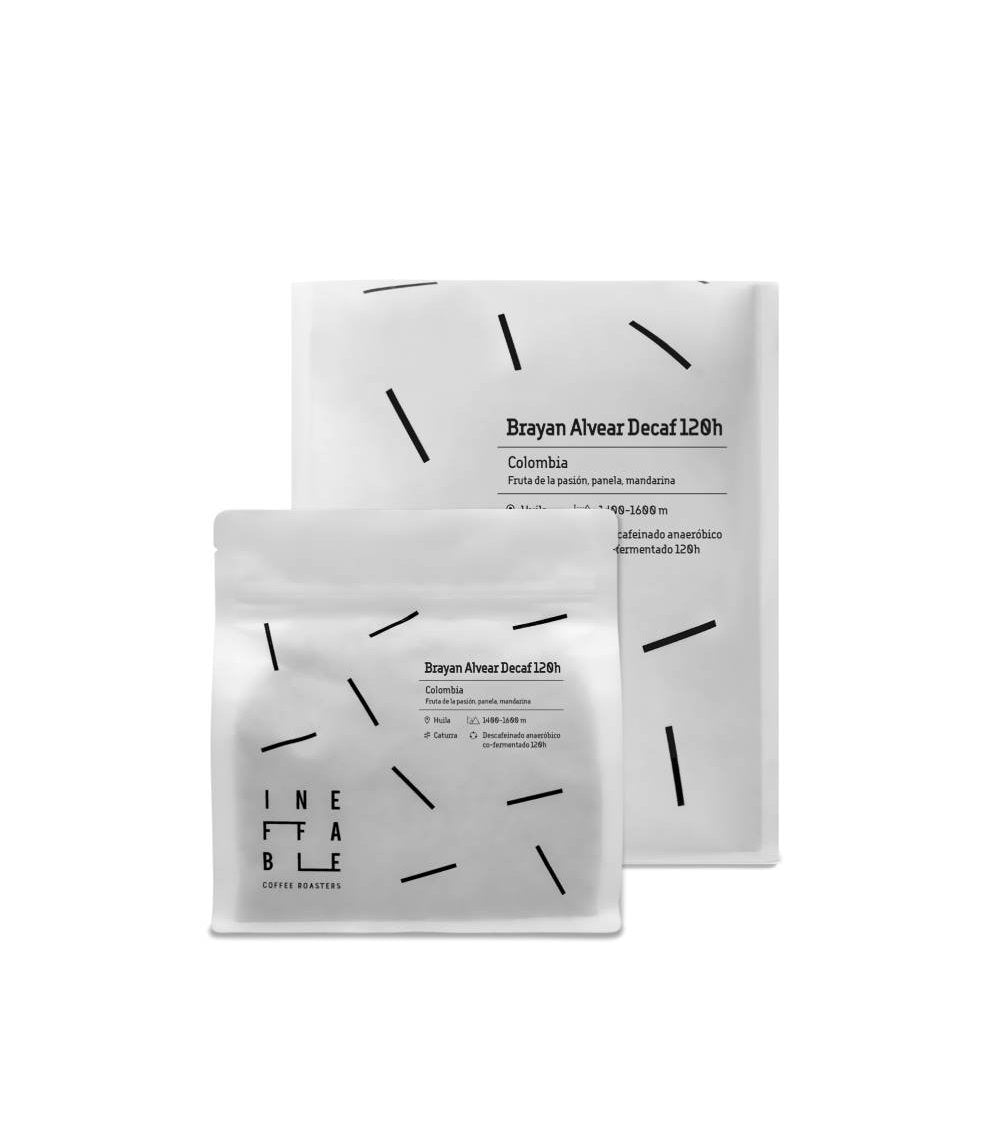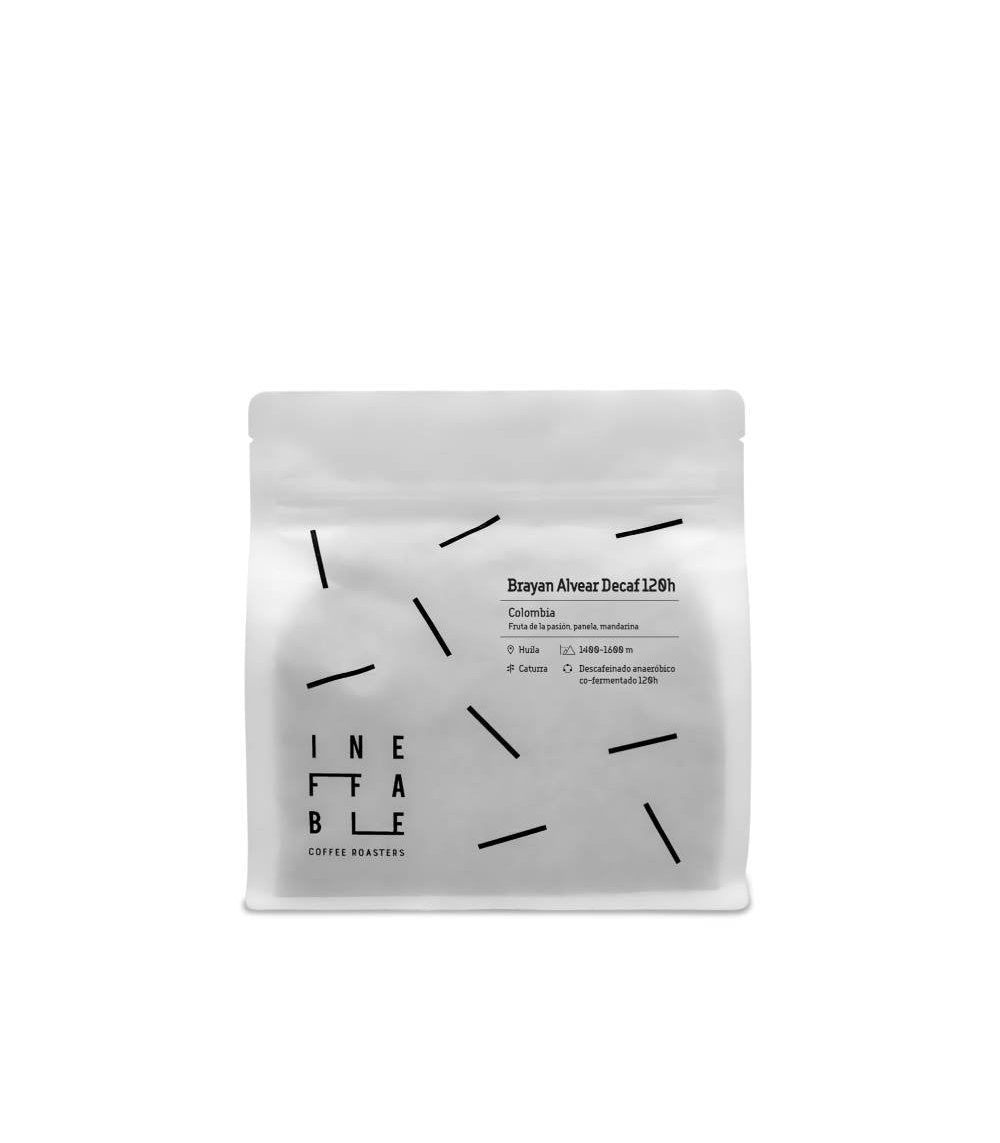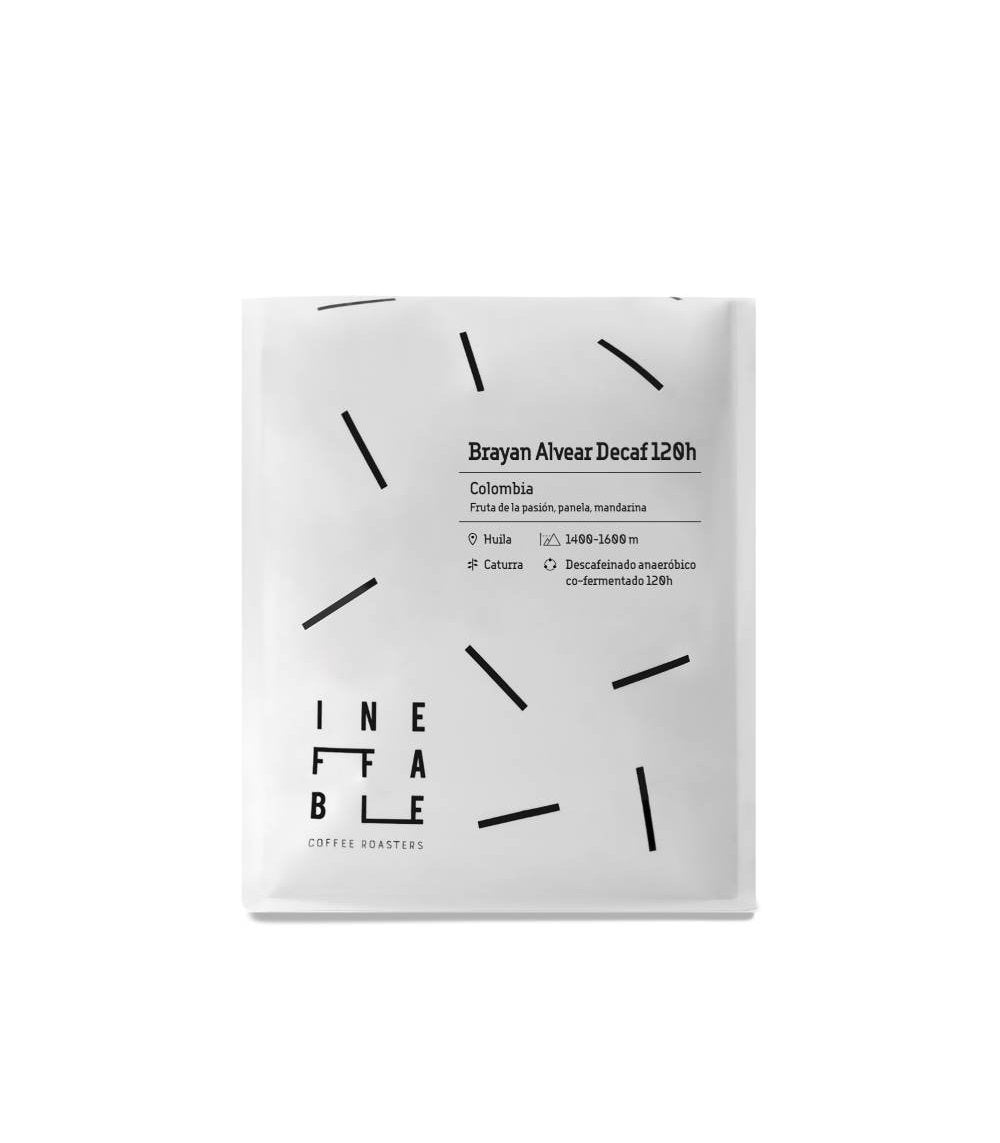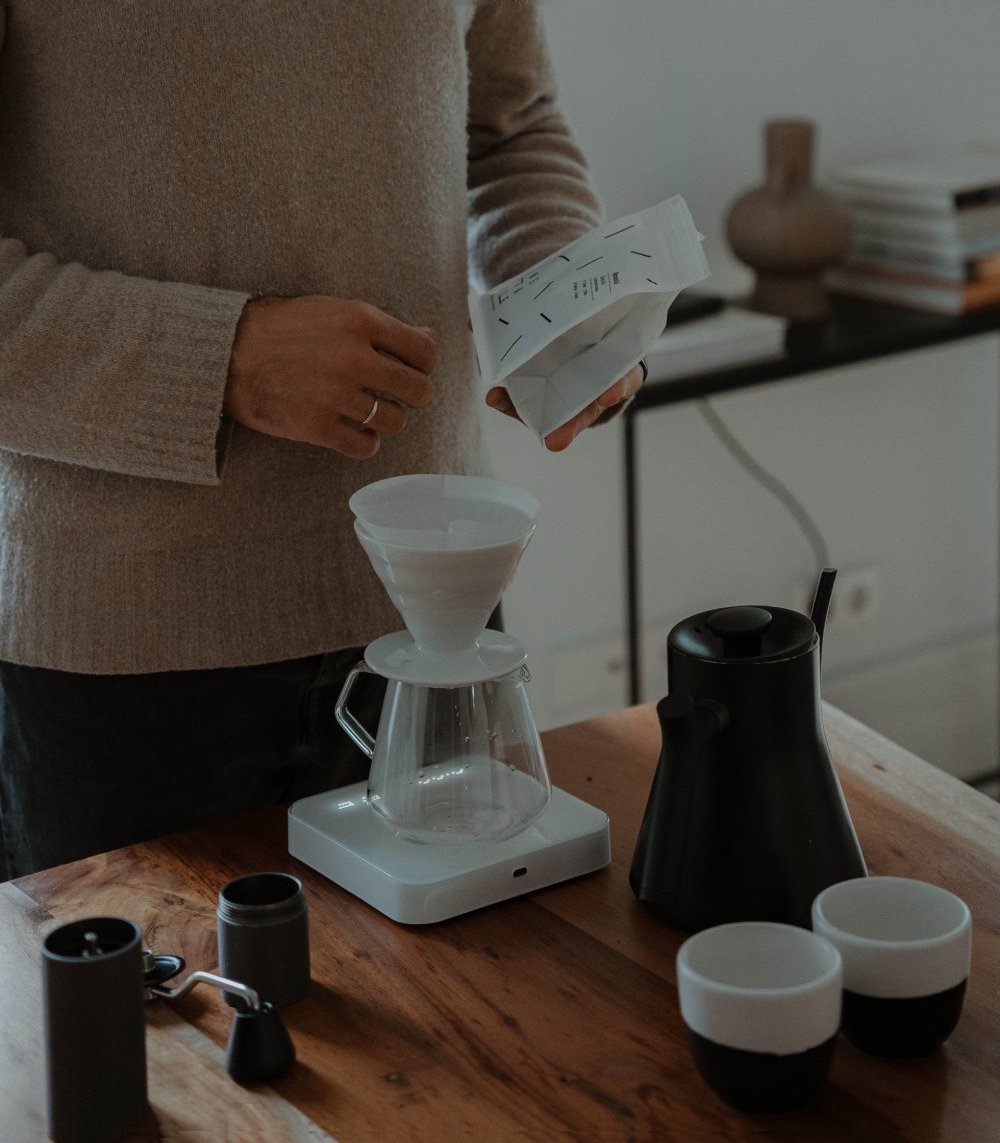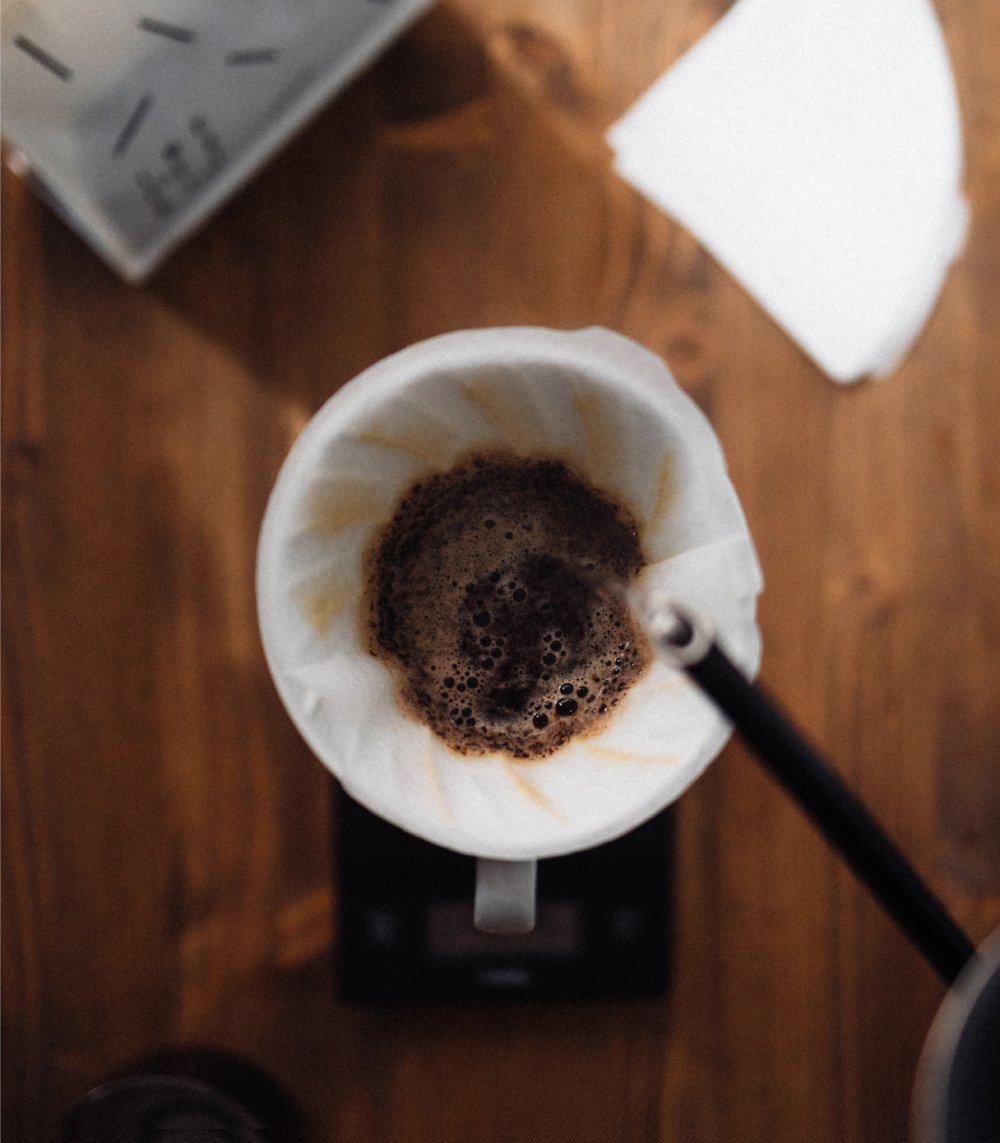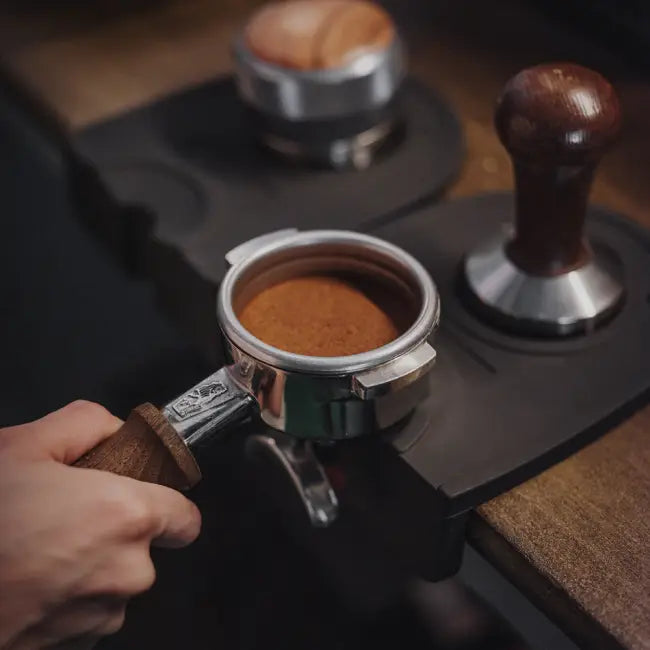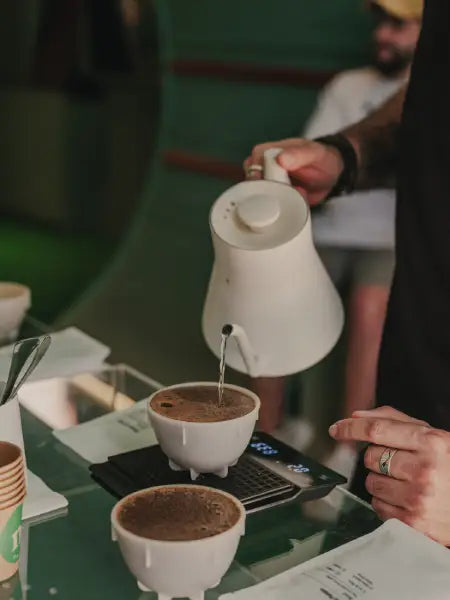Get to know this coffee in detail
Brayan's roots are deeply connected to the nutrient-rich soil of the San Adolfo coffee region in Huila.
From a young age, Brayan absorbed coffee-making wisdom like a sponge, thanks to the lessons his father gave him after school.
Today, he manages several farms with more than 60 people under his direction and is passionate about pursuing coffees with bold profiles and exceptional cups.
This decaffeinated batch is proof of that. It features an innovative process that begins with a 120-hour anaerobic fermentation in cherries and co-fermentation with dehydrated passion fruit pulp. After drying, the decaffeination process is performed with sugarcane extract (SA), a natural compound derived from sugarcane crops, to remove the caffeine from the coffee beans.
Meet the producer
An exceptional decaf from Brayan Alvear in Huila

Nestled in the mountains of Acevedo, Huila, Colombia, Brayan embodies the coffee-growing spirit of San Adolfo. From a young age, while other children played, he listened to his father talk about the intricacies of growing coffee. Those conversations, filled with wisdom and love for the land, awakened in him a passion that now drives him to share the treasures of his region with the world.

Today, Brayan is not alone. Along with 60 people, including his family, he leads a community effort that combines tradition and technology to produce a coffee that tells stories in every sip. With the support of Forest and the Ancla processing plant, Brayan's coffee is not only grown, but transformed into a sensorial experience that reflects the best of San Adolfo. His dream is simple yet bold: that every cup carries with it a piece of the soul of Huila.
Innovation in processing

Brayan's coffee production process is as fascinating as the surrounding landscape. It all begins with a 120-hour anaerobic fermentation, where coffee cherries are blended with dehydrated passion fruit pulp. This step not only ensures the development of unique fruity flavors but also highlights the coffee's unique character. After fermentation, the beans are carefully dried in mechanical silos for 144 hours, achieving a perfect moisture balance. Finally, a 30-day stabilization period in GrainPro bags seals a flavor profile that combines sweet spices, passion fruit, and mandarin.
A Natural and Respectful Decaffeination

This special decaffeinated batch is processed using an innovative method that utilizes ethyl acetate (EA), a natural compound derived from sugarcane from the Cauca Valley. This process begins with humidifying the beans using pure spring water, opening their pores for effective extraction. The EA then circulates through the beans, selectively removing the caffeine while respecting the aromatic compounds.
What sets this process apart is its precision: it uses gentle temperatures and controlled pressures to preserve the coffee's nuances. After extraction, the beans are steamed to eliminate any residual caffeine and then undergo a final drying process. The result is a decaffeinated coffee that, despite losing caffeine, retains all its personality and complexity.
A Mug That Tells a Story

This batch produced by Brayan represents the cutting edge of special processes being carried out in Colombia. It is a tribute to San Adolfo and the people who make this dream possible. From the mountains of Huila to your table, each bean carries with it not only an exceptional flavor, but also the effort of a community committed to excellence and sustainability.
Filter for Bryan Decaffeinating
The following recipe is a guide for preparing coffee at home. Results may vary depending on your equipment, settings, and all the variables that influence extraction.
With every coffee we roast, our team tests until they find a recipe that highlights all the coffee's qualities. The one below includes all the information needed to reproduce it. Even so, we always recommend trying and experimenting to discover what you like best: use it as a guide and adapt it to your own taste.
Remember: it's the journey that matters, not the destination.
Please note: Water is the most important factor in achieving a great cup of coffee. Depending on where you live, its composition can vary dramatically. Therefore, we recommend using at least filtered water; another option is a blend of Bezoya and Lanjarón. When adjusting the recipe, change only one variable at a time to identify how it influences the flavor.
It's common to start by adjusting the coffee-to-water ratio. Once you get a cup with a pleasant strength and mouthfeel, you can adjust other aspects of the brewing process.
Most percolation coffee recipes use a ratio between 1:15 and 1:17, with a brewing time of between 2:30 and 4:30 minutes.
Kalita / Origami / Orea
We chose this method to share our recipes because it's very versatile and easy to adapt to other percolation systems. The flat bottom and wavy pleats of Kalita filters create a large surface area that prevents significant flow restriction caused by fine particle migration or blockages.
Kalita/Origami/Orea
Recipe:
- Ratio: 1:16
- Coffee: 20g
- Water: 320g
- Total time: 3.60 min
- Temperature: 94ºC
- Grinder: EK43 9 (SSP low fines Burrs)
- TDS 1.38% EY 19.5%
Variables:
- Resting time: minimum 20 days.
- Water: Bezoya 1:2 Lanjarón
- Filter: Sibarist B3
Equipment:
Orea, B3 sibarist filter, Scale, stopwatch, mill, cup/decanter and kettle (gooseneck).
Method:
- Place the Orea in a cup/decanter and insert the filter. Pour hot water over the filter to eliminate the papery taste and preheat the unit.
- Grind the coffee to a level that you recommend.
- Throw away the water and place the Orea on the scale, add the coffee, distributing it evenly, tare the scale and start the stopwatch.
- Pour 60g of water in with circular motions and wait 30-40 seconds for the coffee to degas. If the coffee has been recently roasted, give it more time.
- Slowly pour in approximately 200-250g of water and swirl the Orea once to level the coffee bed and ensure it's completely covered with water. Never fill to the brim; leave at least a 2cm gap from the top to limit water flow through the coffee bed, which can reduce extraction.
- Continue pouring water slowly as before until you have added the necessary amount of water.
- Turn one last time to let the water drain.
- We are looking for a total time according to the recipe, adjust the grind size if necessary next time.
Espresso
Here's our most up-to-date recipe. It's important to remember that this recipe is a reference and that many variables will influence the final result of the espresso in your cup: from the condition of your machine and grinder, the water you use, the storage/steeping time of your coffee, to the temperature/atmospheric pressure, etc. Therefore, you may need to adjust some parameters to achieve a flavorful and balanced espresso based on your specific needs.
Recipe:
- Ratio: 1:2.2
- Dry: 18gr
- In cup: 41gr
- Time: 30-36s
Variables:
- Resting time: minimum 2 weeks
- Temperature: 94ºC
- Pressure: 6 bars
- Pre-infusion: No
- GH 60 (ppm as CaCO3) KH 30 (ppm as CaCO3)
Machinery and equipment used for this recipe:
- Espresso machine: La Marzocco KB90 2G
- Mill: Mythos 1
- Scoop: 22gr VST (without slot)
- Extras: Barista Hustle WDT, Push Tamper (flat, 100% level)
Cold brew
Esta es la receta de café cold brew que te proponemos para que elabores 600ml de cold brew. El ratio, en caso de que quieras elaborar más o menos de esta cantidad, es 1:15, 1gr de café por cada 15gr/ml de agua.
Receta y equipamiento:
- Café 40gr. (Usa el café que prefieras dependiendo de tus gustos. Nuestra sugerencia sería elegir perfiles de café que te gusten en elaboraciones de filtro). Si tiene el tag “Cold Brew” es de nuestros favoritos.
- Molienda: Comandante 16 clics.
- Agua 600gr/ml a temperatura ambiente.
- Composición del agua: 2 partes de Lanjarón por 1 de Bezoya.
- Una malla o seda.
- Un recipiente de cristal (preferiblemente con tapa)
- Dejar reposar 22 horas (en el frigorífico).
La forma de hacer el cold brew:
- Molemos el café con una molienda media (Comandante 16 clics).
- Echamos el café directamente en la malla.
- Introducimos la malla en el recipiente de cristal.
- Vertemos el agua en el recipiente a través de la malla con el café.
- Removemos suavemente para saturar todo el café.
- Tapamos el recipiente.
- Lo dejamos reposar en el frigorífico (¡atención a los olores fuertes!).
- Después de este tiempo de reposo, retiramos la malla con el café y estará listo.
- Como paso extra, puedes volver a filtrarlo por un filtro de papel V60, Kalita o similar para obtener un resultado más limpio y cristalino.
- Mantenlo refrigerado.
- Esta receta es para no diluir. Ni siquiera con hielo. En caso de ponerle hielo la composición del agua del hielo afectará al sabor de tu bebida. Mejor hacer tu propio hielo con la misma composición de agua que proponemos. Si usas hielo, quizás quieras bajar el ratio (1:9 a 1:12).
